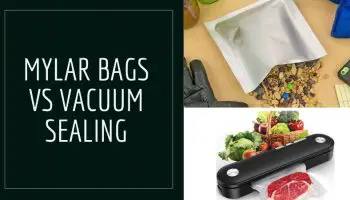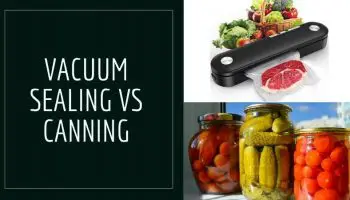Are you tired of food spoiling in your fridge?
You spend all this money on fresh fruit and vegetables but when you store it in your fridge to keep fresh or enjoy it for another day, it’s all black and bruised and bad!
I can’t begin to tell you how many times I’ve bought a nice big cantaloupe or a fresh bushel of strawberries, meant to last me a week of healthy afternoon snacks or pre-workout fuel, only for them all to go bad a day or so after I stocked them in my fridge.
It’s frustrating and can be damaging to your health and your wallet (unfortunately, healthy food isn’t exactly the cheapest buy from the supermarket). The whole point of a fridge is to keep food fresh for a certain amount of time, right?
So you might be wondering, what am I doing wrong? And how can I save my food better, so I can enjoy a better snack or meal?
There is a process of storing healthy food in your fridge. Unfortunately, not many people know about it and then waste most of their food, but fortunately, it is very simple to follow and can save you tons of fresh, healthy food (and time and money on your next trip to the grocery store).
Important Points
Get Rid of The Junk
Before you can save your healthy food from spoiling and rotting in your fridge, you have to make sure your healthy food isn’t sharing your fridge with, well, not so healthy foods.
Give your fridge (and your diet) the spring cleaning treatment and clear out all the junk. You want to see milk, fruits, vegetables, lean meats, and water in your fridge, not sugars and fats and other nasty stuff that’s been processed and canned.
If you have to keep throwing away healthy food that was perfectly fine a few days ago, chances are you’re being tempted to eat the unhealthy foods in your fridge, forgetting to eat the healthy food while they’re still good to eat.
Get rid of temptation and get rid of the junk in your fridge. Your healthy food will be more open and visible to your hungry eyes the next time you open your fridge.
Organize
Once you’ve removed the bad and saved room for the good, it’s time to organize that good! A cluttered fridge is a sure-fire way to spoiling your food faster.
Many modern, up-to-date fridges have specialized compartments for different types of food, making organizing your healthy food and saving it from going bad sooner all the easier.
Put your vegetables in one drawer, your fruits in another drawer, your cheeses and yogurts and any other dairy products (which aren’t bottled milk or ice cream) in one compartment, your waters and juices and bottled milk on one shelf, and your lean proteins stacked on another shelf, et cetera.
Different foods go bad at different rates, so keeping them all in one place, instead of clustered together in one big messy heap, is a good way to keep track of their quality and freshness, and to make sure what you have when you have it.
Keep Track of Time
Time is of the essence, especially when it comes to healthy food. Healthy food is healthy for a reason.
Chances are it hasn’t been dipped in a ton of preservatives meant to give it a longer shelf life at an unnatural (but more economically beneficial) rate.
Healthy food is natural, that’s why it’s so good for you, but the payoff is that it does not have as long of shelf life.
Healthy food will lose its freshness and high quality only a few days, maybe even less after you purchase it from the grocery store.
Make sure you eat your healthy food soon after you buy it, don’t just leave it in the fridge to save for later in the day (or week) and then forget about it.
Also, remember to check the expiration or “sell by” dates which are listed on many grocery store items.
These are the best ways to determine how long a healthy food will stay healthy, and how long you can keep it in your fridge without it going bad before you get the chance to eat it.
Save What You Have
If you use healthy food, like a lean chicken or a tomato, as part of a recipe for a larger meal but have some leftover,
Then you save it in your fridge to eat as leftovers or to use in another meal. But just stuffing the leftover food in your fridge won’t be enough to save your food.
Leftover food can spoil even quicker in a fridge if it’s not wrapped properly than food that hasn’t been eaten or used for cooking yet.
Wrap the leftover food up nice and tight in aluminum foil or clear plastic wrapping, to help the food retain its freshness and quality until your next meal.
More Features
Cleanliness: A clean fridge equals a clean diet. Get rid of the junk (food) to give your healthy food the spotlight it deserves.
Organization: Clear out the clutter in your fridge and keep your foods together in one place within your fridge.
Tracking Time: Check expiration and “sell by” dates marked on your healthy food items to make sure when the best time to eat those foods is before they lose their freshness and spoil.
Recycle and Reuse: Don’t waste leftover food by throwing it away or storing it without any added protection in your fridge. Give it extra protection from going bad by preserving it with wrapping.
Frequently Asked Questions (And Answers)
How much food should I store for my family?
This depends on how large your family is and what their needs are. Healthy food storage needs are specific to a family size which can determine how big or small that family’s needs are.
How can I know if the food I’m eating and storing is really healthy?
Check the food product’s nutritional value. For many food items like fruit, vegetables, eggs, and milk, food providers are required to provide expiration dates and the like (“sell by” or “use by”) and other important nutritional information for shoppers and consumers to consider before purchasing.
These information tidbits will tell you how good the food is for you, how long it will be good for, and when it is expected to go bad and not be so healthy anymore.
What should I do if my power is cut or goes out and my fridge stops working?
If your power is cut or goes out, due to an electrical storm or other types of disaster and emergency, and your fridge stops working with all your healthy food inside,
Then it is possible that your healthy food will still be good to eat for a short while at least (a few hours). However, if your fridge continues not working,
Then you should consider throwing out any perishable food left inside or considering other alternatives for safe storage, like moving it to an icebox, as your food will likely be on the verge of going bad or has already gone bad.
How long can food be stored in the freezer?
Food can last longer stored in a freezer than it can store in a fridge. Food stored in a freezer generally can last up to six months before going bad.
After this period of time, the food will begin to lose its quality and freshness, though not as quickly or much per day as the healthy food stored in the fridge.
However, some fridges may not be designed to adequately store food for up to this long, so always double-check with your fridge’s brand to make sure.
How accurate are the expiration and “sell by” or “use by” dates? Can I still store and eat food beyond these dates listed?
No. These dates are listed and given for very good reason by food and health professionals and experts.
It is best not to continue storing or eat foods beyond the expiration dates, or dates marking freshness and use, as your food has likely already gone bad and can make you sick if consumed
Final Verdict
These are some very simple and easy ways for you to cut back on the food you waste by throwing out and the money you spend almost every other week buying new healthy foods at the grocery store that are likely to just end up in the trash, rotten and spoiled, all over again.
Save time, money, and food by properly storing your healthy foods in the fridge, improving your health and diet, and also your meals.
Make sure to follow food safety, like checking expiration dates and the temperature of your fridge to make sure everything is fresh, up to date, and running properly.



